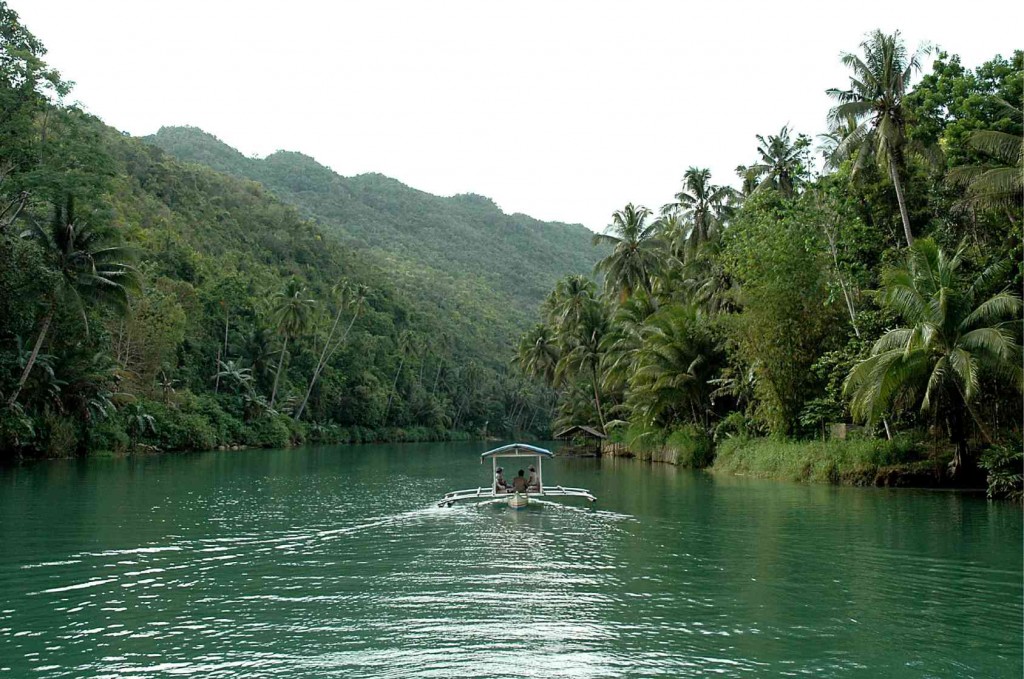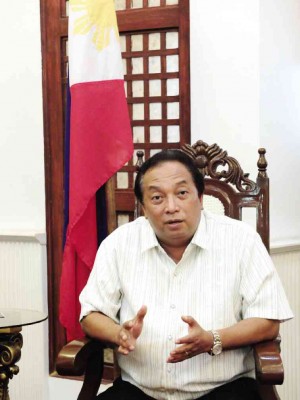Bohol tourism industry rising from the rubble
Nine months after a 7.2 magnitude earthquake rocked Bohol in Central Visayas, the island province is attempting to put behind it what its governor considers to be a “temporary setback.”
Part of the efforts is the ongoing tourism rebranding campaign to lure back tourists to the province.
Governor Edgar Chatto admits that the province’s tourism industry suffered greatly because of the earthquake.
He says that tourism is the lifeblood of most of the towns in the province, contributing about 20 percent to the local economy.
Chatto says that when tourism became an industry in the province, the local government started collecting “as much as P50 million, with only P2 million coming from the public market.” This illustrates how important tourism is in generating revenues.
Bohol prides itself with historical churches and beaches. The earthquake destroyed many of the centuries-old churches; some are beyond repair while others are closed for rehabilitation with their completion dates still uncertain.
The United States Agency for International Development (USAID) is assisting the province together with the World Tourism Organization (UNWTO), the Department of Tourism (DOT), and the Pacific Asia Travel Association (PATA) through the Bohol Tourism Recovery Plan (BRTP), which is under USAID’s Advancing Philippine Competitiveness Project (USAID-COMPETE).
“Bohol has always been one of the top tourism destinations, and we in USAID believe that by helping Bohol’s tourism industry recover from the aftermath of the earthquake and Typhoon Yolanda, we help the whole country toward achieving economic growth,” says Reed Aeschliman, acting mission director of USAID, in earlier reports.
BTRP is a product of five months of assessment and research efforts conducted by different agencies.
“The recovery efforts of Bohol definitely have to be aligned with the vision we have set up before the earthquake,” Chatto says. “We want to make sure that it is not derailed even with the temporary setback.”
Bohol’s tourism framework is called “HEAT IT Bohol,” which means health, education, agriculture, tourism, and information technology.
“Job creation is a thrust, which can be captured by the three main engines for growth and livelihood opportunities,” Chatto says.
He adds that the province wants to take a more optimistic route.
“As we rebuild the churches and the watchtowers, we hope to develop expertise along that line in the province,” Chatto says. “We want to attach it with Bohol Island State University (by offering) degree courses on preservation.”
The province is now working with Tesda (Technical Education and Skills Development Authority) and Escuella Taller, a school in Intramuros (Manila) that teaches conservation and restoration skills to underprivileged youth, Chatto says.
It was established through a grant from the Agencia Espanola de Cooperacion Internacional Para el Desarrollo.
The governor, who used to be a congressman and chair of the House tourism committee, says that they want to use the “lull” in tourist arrivals to strengthen the areas “where we have gaps.”
“We are now evaluating the overall strategies of marketing, product development, pricing, promotions, strategies, training of frontline people, capacity development, and capacity of the schools, training institutions, and the quality of graduates,” he says.
The province’s tourism council is also looking at retraining industry workers, particularly those in the front lines such as drivers and tour guides.
At present, Bohol’s main air portal is the Tagbilaran airport.
Investors and entrepreneurs in Bohol are looking forward at the opening of Panglao airport. However, construction is yet to start as the bidding process began only last month.
Telecommunications company Philippine Long Distance Telephone Co. (PLDT) poured in P700 million to set in place a fiber optic network in the province. The governor hopes that this will attract business processing outsourcing companies to the province.
Chatto identifies the province’s engines of growth as eco-cultural tourism, agri-industrial tourism and information technology. It is important to note that before the PLDT investment, Bohol used to lag behind neighboring provinces in terms of IT infrastructure.
“Our goal in Bohol is not only to help the Boholanos, but to contribute to the overall development of the region and the province,” Chatto says.





















